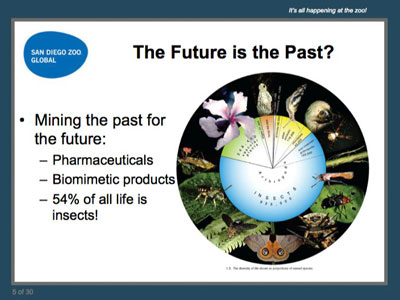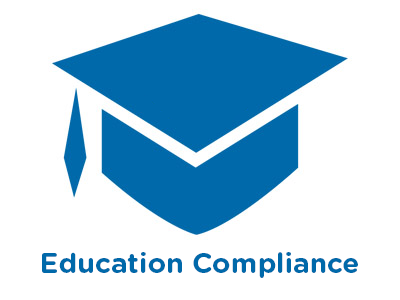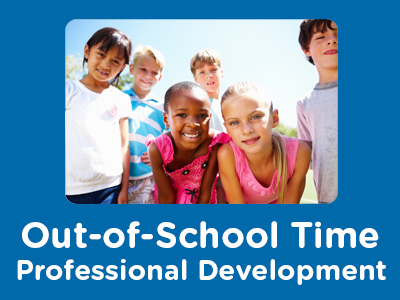 |
Energy and the Environment |
2.00 |
CalSAC has partnered with the Pacific Gas & Electric Company (PG&E) to bring the Energenius® Out-of-School Time Program to our online training platform. This FREE environmental stewardship curriculum is designed to engage children and youth to think about how they use energy, how energy is measured, paid for, and ways to save energy. Children and youth will understand how they can help reduce the impacts of energy use and production on the environment, and also practice influencing others to take energy-saving actions. Additionally, the curriculum is uniquely and intentionally designed to engage families in energy and water conservation habits.
Energy and the Environment is Activity Guide #2 in the 4-part Energenius® Out-of-School Time Program. The curriculum and activities are designed to engage children and youth in understanding how energy is produced, where energy comes from, and some impacts of energy use and energy production on the environment. This course will prepare participants to deliver the activities from the Energy and the Environment Activity Guide as well as connect families to resources to help save energy and money. |
 |
El temperamento de los niños: un enfoque práctico para satisfacer las necesidades individuales (CDA 3) (Spanish) Children's Temperament: A Practical Approach to Meeting Individual Needs (CDA 3) |
2.00 |
Cada niño viene a este mundo como un individuo único con formas únicas de responder al mundo a través de sus emociones y acciones. A esto se le llama temperamento. Reconocer y comprender las diferencias de temperamento es crucial para fomentar la salud socioemocional de un niño.
Every child comes into this world as a unique individual with unique ways of responding to the world through their emotions and actions. This is called temperament. Recognizing and understanding differences in temperament is crucial for nurturing a child's social-emotional health. |
 |
Social-Emotional Learning, Character Building & Enhancing Quality |
2.00 |
By the end of this course, you will be able to:
Strengthen your understanding of the social-emotional learning and character building that expanded learning programs support.
Be able to articulate what social-emotional learning and character development looks like in children and youth.
Identify the connection between quality standards and social-emotional learning and character development. |
 |
Correcting Performance Problems: Providing Feedback To Employees |
0.84 |
By addressing employees who have performance problems, you can help them make positive changes, encourage career advancement, and promote personal and professional growth. Addressing an employee involves providing the feedback necessary to improve performance.
In this course you will learn to: prepare to conduct a feedback session in which you encourage communication with the employee, and conduct a constructive feedback session with an employee who has a performance problem. |
 |
Correcting Performance Problems: Providing Feedback To Employees (Instructor Guide) |
0.84 |
By addressing employees who have performance problems, you can help them make positive changes, encourage career advancement, and promote personal and professional growth. Addressing an employee involves providing the feedback necessary to improve performance.
In this course you will learn to: prepare to conduct a feedback session in which you encourage communication with the employee, and conduct a constructive feedback session with an employee who has a performance problem.
This Instructor's Edition of this course includes notes and suggestions to assist you in presenting the material, whether in an in-person classroom setting, or as an instructor-led online or distance-learning course. It also provides you with the answers to questions found in mid-lesson activities, as well as in the quiz that concludes the course. |
 |
Quality Management: Preparing to Change Processes (Instructor Guide) |
0.75 |
Business process improvement is a basic managerial responsibility. Just as managers are responsible for employee performance appraisals and budgeting, they are also responsible for making continual improvements in their division or department.
Because improving business processes is an ongoing effort, management needs to control and coordinate processes to ensure their success. In addition, employees who are affected by improvement changes need active support from management.
In this course you will learn to: identify management goals in preparation to lead business process improvement, as well as plan improvements.
This Instructor's Edition of this course includes notes and suggestions to assist you in presenting the material, whether in an in-person classroom setting or as an instructor-led online or distance-learning course. It also provides you with the answers to questions found in mid-lesson activities, as well as in the quiz that concludes the course. |
 |
Quality Management: Preparing to Change Processes |
0.75 |
Business process improvement is a basic managerial responsibility. Just as managers are responsible for employee performance appraisals and budgeting, they are also responsible for making continual improvements in their division or department.
Because improving business processes is an ongoing effort, management needs to control and coordinate processes to ensure their success. In addition, employees who are affected by improvement changes need active support from management.
In this course you will learn to: identify management goals in preparation to lead business process improvement, as well as plan improvements. |
 |
Business Communication |
1.00 |
Business communication is best described as the process of sharing information for the benefit of a business. It's generally categorized as being either internal or external. Internal communication, as the name suggests, is when a business shares information within its organization. External communication is when a business shares information outside of its organization, either to clients, customers or vendors.
In this course, you'll learn about the influence of body language, the essentials of business writing, and more, as they relate to communicating in the business world. |
 |
Project Teams: Preparing Teams for Project Work |
1.00 |
Building a project team is more complex than assigning employees to the team. Team members must feel a sense of dedication to other team members, as well as to the project itself. Members who are not dedicated to the project team often disregard meetings, deadlines, and commitments, causing the entire team to suffer. To avoid these problems, the team managers and supervisors need to encourage team building to benefit the project, the team members, and the organization.
In this course you will learn to: empower and motivate a project team and develop positive culture in a project team, identify the causes of change in a team and manage change, and improve existing project teams. |
 |
Project Teams: Preparing Teams for Project Work (Instructor Guide) |
1.00 |
Building a project team is more complex than assigning employees to the team. Team members must feel a sense of dedication to other team members, as well as to the project itself. Members who are not dedicated to the project team often disregard meetings, deadlines, and commitments, causing the entire team to suffer. To avoid these problems, the team managers and supervisors need to encourage team building to benefit the project, the team members, and the organization.
In this course you will learn to: empower and motivate a project team and develop positive culture in a project team, identify the causes of change in a team and manage change, and improve existing project teams.
This Instructor's Edition of this course includes notes and suggestions to assist you in presenting the material, whether in an in-person classroom setting, or as an instructor-led online or distance-learning course. It also provides you with the answers to questions found in mid-lesson activities, as well as in the quiz that concludes the course. |
 |
Budgeting: Capital Budgets |
1.00 |
Budgets represent how a company will use its resources to accomplish its goals. To achieve some goals, companies need to invest in new facilities or expensive equipment. These items, which will help produce income over a number of years, are planned for in capital budgets. Capital budgets have their own terminology with which you will need to be familiar in order to plan well and make good decisions. Depreciating is one of the central concepts in capital budgeting. |
 |
Budgeting: Variances, Forecasts, and Action Plans |
0.75 |
Budgets are rarely perfect, and variances will occur. To avoid significant problems or missed opportunities, you should study all variances to determine their causes and possible effects. Some variances are favorable, while others are not. You can use variances in year-to-date figures for sales, materials, labor, and to project more accurate forecasts for the rest of the year. |
 |
Asthma Explained for the BLS Provider |
1.50 |
Briefly review some of the most basic concepts of caring for a patient who is suffering from an asthma attack. Final Exam: This multiple-choice exam is designed to test your knowledge of the material you just reviewed. You have two attempts to gain an 80% or higher on this exam. Please take your time and answer each question carefully. |
 |
Quality Management: Ideas and Organization |
0.84 |
Brainstorming works best when used by a group of four to nine people. When brainstorming, team members’ goals should be to break their existing patterns of thought by generating original and creative ideas.
In this course you will learn to: sequence and follow the steps for brainstorming, identify the purpose of affinity diagrams, construct activity network diagrams, and identify the benefits of using CPM and PERT charts to understand the critical path of a project. |
 |
Quality Management: Ideas and Organization (Instructor Guide) |
0.84 |
Brainstorming works best when used by a group of four to nine people. When brainstorming, team members’ goals should be to break their existing patterns of thought by generating original and creative ideas.
In this course you will learn to: sequence and follow the steps for brainstorming, identify the purpose of affinity diagrams, construct activity network diagrams, and identify the benefits of using CPM and PERT charts to understand the critical path of a project.
This Instructor's Edition of this course includes notes and suggestions to assist you in presenting the material, whether in an in-person classroom setting or as an instructor-led online or distance-learning course. It also provides you with the answers to questions found in mid-lesson activities, as well as in the quiz that concludes the course. |
 |
Brain Development in Infants and Toddlers (CDA 8) |
2.00 |
Brain development has changed over the last 20 years. Early brain development focused mainly on the intellectual aspects of the brain, but over the last 10 years, more focus has been placed on the social emotional exchanges in infancy and how that affects brain development. Early experiences predispose how children see the world. This course is designed to be part of a Child Development Associate (CDA) Credential™ curriculum and covers CDA Subject Area 8, Understanding Principles of Child Development and Learning. This course can also be taken as a stand-alone learning event or as part of a broader early childhood education curriculum. |
 |
Bioinspiration: A Novel Activity to Engage Students in Creativity and STEM |
1.00 |
Bioinspiration, also known as biomimicry, is an interdisciplinary process in which biological principles and elements are studied in order to draw analogies to be applied to human innovation. We will first define bioinspiration through examples of past successes. Next, we will discuss why conservation organizations like San Diego Zoo Global are interested in this field and how conservation may benefit from the involvement of engineers and industry. Participants will enjoy an adaptation tour of some of San Diego Zoo Global’s diverse plant and animal collections, highlighting examples of how the natural world can inspire engineering. His talk will include an interactive exercise to help stimulate creative thinking based around bioinspiration. |
 |
Biomimicry/Bioinspiration: a novel activity to further conservation involving engineers, business, and San Diego Zoo Global |
1.00 |
Bioinspiration, also known as biomimicry, is an interdisciplinary process in which biological principles and elements are studied in order to draw analogies to be applied to human innovation. Learn how we introduce students to the concept of bioinspiration through a variety of education programs. We will also describe our approach when working with students to foster creativity and think in new and innovative ways. |
 |
Foundation for School Success (CDA 6) |
2.00 |
Beyond simply academic skills, "school readiness" encompasses the holistic development of young children, encompassing social, emotional, physical, and cognitive domains. This course empowers early childhood professionals to support this development from infancy through preschool, laying a strong foundation for future success in kindergarten and beyond. |
 |
A Student Guide to Fire Safety |
0.50 |
Between January 2000 and May 2015, 85 fatal fires in dorms, fraternities, sororities, and off-campus housing took the lives of 118 people. This course offers students a refresher about fire safety, including the main causes of campus fires, the actions students can take to prevent fires, and the importance of working smoke alarms and knowing two ways out.
|
 |
Basic Health & Safety Requirements for Certification |
6.00 |
Best practices and standards for health and safety are the foundation of quality child care. Meeting the basic health and safety needs of all children sets the stage for positive child outcomes.
This health and safety orientation module provides an overview of the basic health and safety requirements and best practices in nine of the topic areas outlined in the Child Care and Development Block Grant (CCDBG) Reauthorization of 2015. The topics are as follows:
Safe spaces; Transportation safety; Handling and storage of hazardous materials; Emergency preparedness; Prevention and control of infectious disease; Food and allergic reactions and how to respond; Administration of medication; Shaken baby syndrome/abusive head trauma; Safe sleep and SUIDS prevention.
This course is designed to meet your professional development needs. It can be taken as a stand-alone learning event, or as part of a broader early childhood education curriculum. In addition to state child care regulations, there may be other health and safety measures required by your municipality, township, or county. Check with county or local offices for information on local health and safety requirements. |
 |
Human Relations Skill Development: Cultivating Communication Skills |
0.67 |
Being able to communicate effectively is an essential human relations skill for school-age care professionals. To be a good communicator, school-age professionals need to understand the components of communication, and how the communication process works. They need to identify barriers to clear communication, and develop strategies for minimizing or eliminating barriers to communication. School-age care professionals also need to work cooperatively with other team members to solve problems and conflicts. In this course, we will explore strategies for cultivating good communication skills. |
 |
Human Relations Skill Development: Team Building Skills and Strategies |
0.67 |
Being able to communicate effectively is an essential human relations skill for school-age care professionals. To be a good communicator, school-age professionals need to understand the components of communication, and how the communication process works. They need to identify barriers to clear communication, and develop strategies for minimizing or eliminating barriers to communication. School-age care professionals also need to work cooperatively with other team members to solve problems and conflicts. In this course, we will explore skills and strategies for team building. |
 |
Course 08: Human Relations Skill Development |
2.00 |
Being able to communicate effectively is an essential human relations skill for school-age care professionals. To be a good communicator, school-age professionals need to understand the components of communication and how the communication process works. They need to identify barriers to clear communication and develop strategies for minimizing or eliminating barriers to communication. School-age care professionals also need to work cooperatively with other team members to solve problems and conflicts. This requires an understanding of how teams work and the characteristics of effective teams. Assessing the current status of personal human relations skills helps each professional identify priorities for making improvements to these skills. |
 |
Human Relations Skill Development (Collection) |
2.00 |
Being able to communicate effectively is an essential human relations skill for school-age care professionals. To be a good communicator, school-age professionals need to understand the components of communication and how the communication process works. They need to identify barriers to clear communication and develop strategies for minimizing or eliminating barriers to communication. School-age care professionals also need to work cooperatively with other team members to solve problems and conflicts. This requires an understanding of how teams work and the characteristics of effective teams. Assessing the current status of personal human relations skills helps each professional identify priorities for making improvements to these skills. |


























